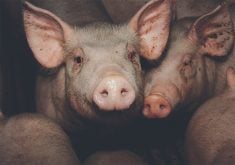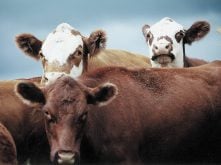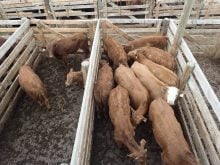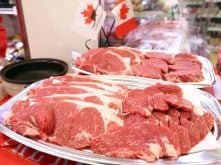SAN ANTONIO, Texas – With drought forecast, low feed grain carryovers from last year and plummeting cattle prices in all classes, the outlook couldn’t be much worse for producers who got up at 7 a.m. to hear the annual Cattlefax outlook.
Cattlefax, the American industry market analysis service confirmed what many attending the National Cattlemen’s Association convention here already knew.
“One of the greatest challenges this year will be the weather and how it will affect the corn and wheat harvest,” said Cattlefax head Topper Thorpe.
Read Also
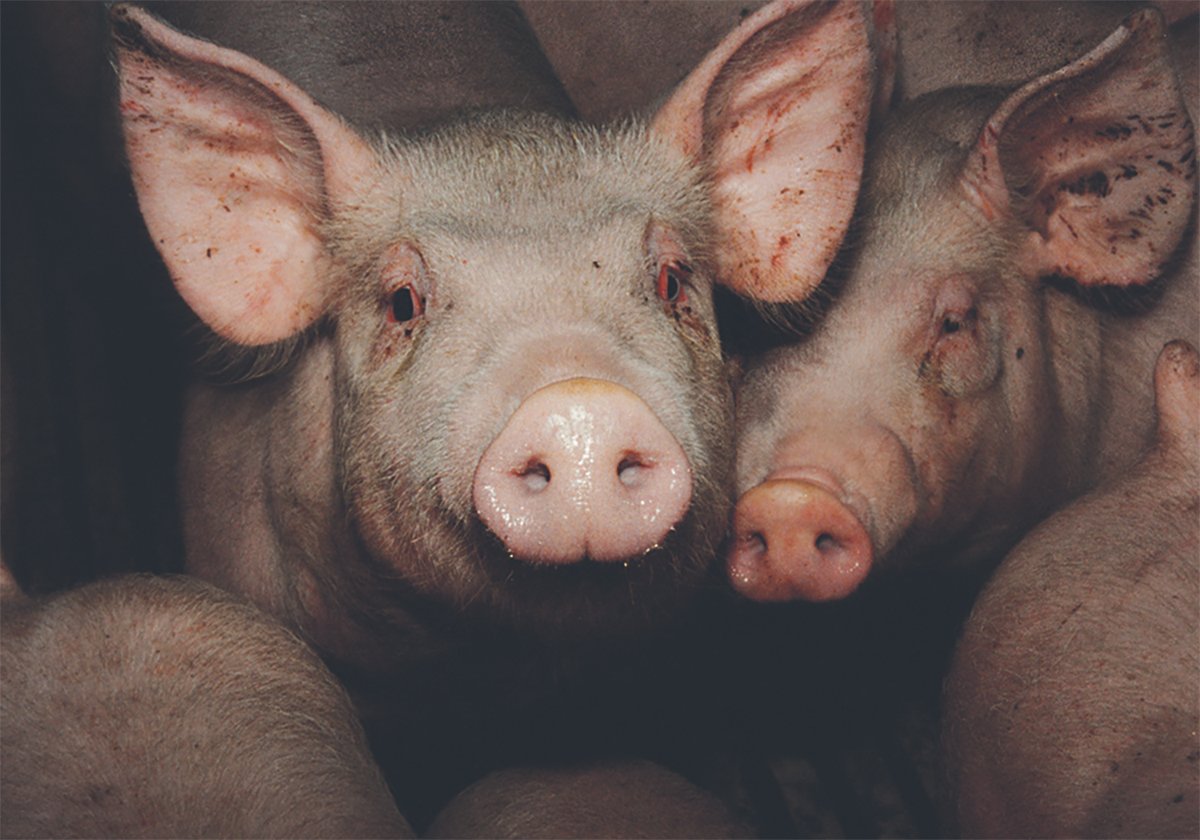
The Western Producer Livestock Report – October 30, 2025
Western Producer Livestock Report for October 30, 2025. See U.S. & Canadian hog prices, Canadian bison & lamb market data and sales insights.
With subsoil moisture reserves already depleted due to last summer’s heat wave in the cornbelt, this spring planting season doesn’t look much better. If there’s a small crop of about eight billion bushels, corn could be worth $4 (U.S.) a bushel. A bumper crop of more than 9.5 billion would push corn down to a more affordable $2.60. Corn is the bellwether for feed grain prices in North America.
Prices down
All segments of the industry are experiencing price declines as cattle numbers are expected to peak this year at 105 million head followed by an inevitable downturn.
The calves born to all those cows are still appearing in feedlots. Along with additional heifers that were ordinarily kept as replacement breeders, it’s anticipated 26-27 million will be fed out in the United States for the next three years, said analyst Tom Brink.
Fed cattle prices have dropped about $150 per head and as feed grain prices escalate, money paid for feedlot cattle is going down at the rate of around $15 per hundredweight, said analyst Randy Blach.
Thorpe expects prices to recover some by 1998 because cattle numbers will peak in 1996 and producers will begin to reduce their herds.
“We’re not to the top of the hill yet,” said Brink. He expects meat production to top out in 1997.
“We have several years of very large production ahead of us.”
Widespread herd reductions are expected to place 25 billion pounds of meat in the system.
As well, because more cows, normally kept for breeding, are expected to be slaughtered, more hamburger is likely to appear on the market.
A large problem is slow consumer spending.
U.S. consumers spend about $46 billion a year on beef and they’re not expected to loosen their pursestrings much more.
Overall beef supply is not as bad as it could be, said Brink.
This year the U.S. became a net exporter of beef, meaning it sold more than it brought into the country. These exports, chiefly to Japan, have taken the edge off the oversupply problem.
On the import side, Canada is sending more beef, but overall it accounts for only two percent of U.S. beef supply.
A record shipment of Mexican cattle that included cull cows arrived in the U.S. in the first quarter of 1995. Driven out by drought and a devalued peso, Mexican producers were anxious to earn some American currency to offset losses.
Because of widespread cow loss and culls due to the bad weather, 1996 will not likely bring another influx of Mexican cattle.



